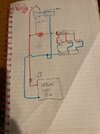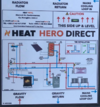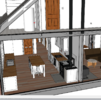- Joined
- 13 Jul 2024
- Messages
- 20
- Reaction score
- 0
- Country

The Heat Hero Direct seems like an interesting product and related to this discussion:

It also comes in a "gravity" model:

The gravity model seems to have several injector tees. I'm not sure if the "direct" has injector tees too or whether it simply has through ports and its main feature being a built in cooling loop, in the event of water getting close to boiling.
There is a good video on the heat hero gravity in this link:

It also comes in a "gravity" model:

The gravity model seems to have several injector tees. I'm not sure if the "direct" has injector tees too or whether it simply has through ports and its main feature being a built in cooling loop, in the event of water getting close to boiling.
There is a good video on the heat hero gravity in this link:



